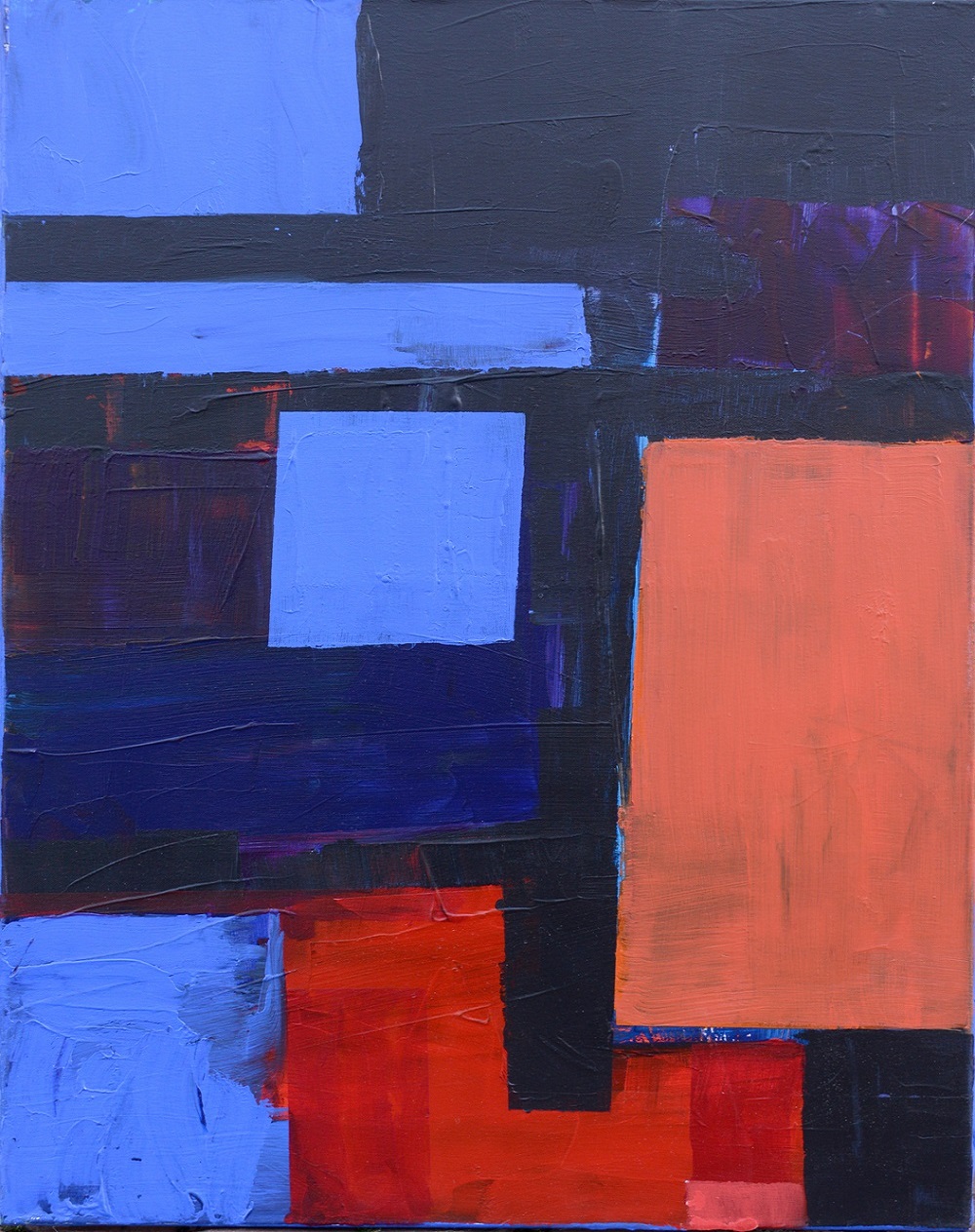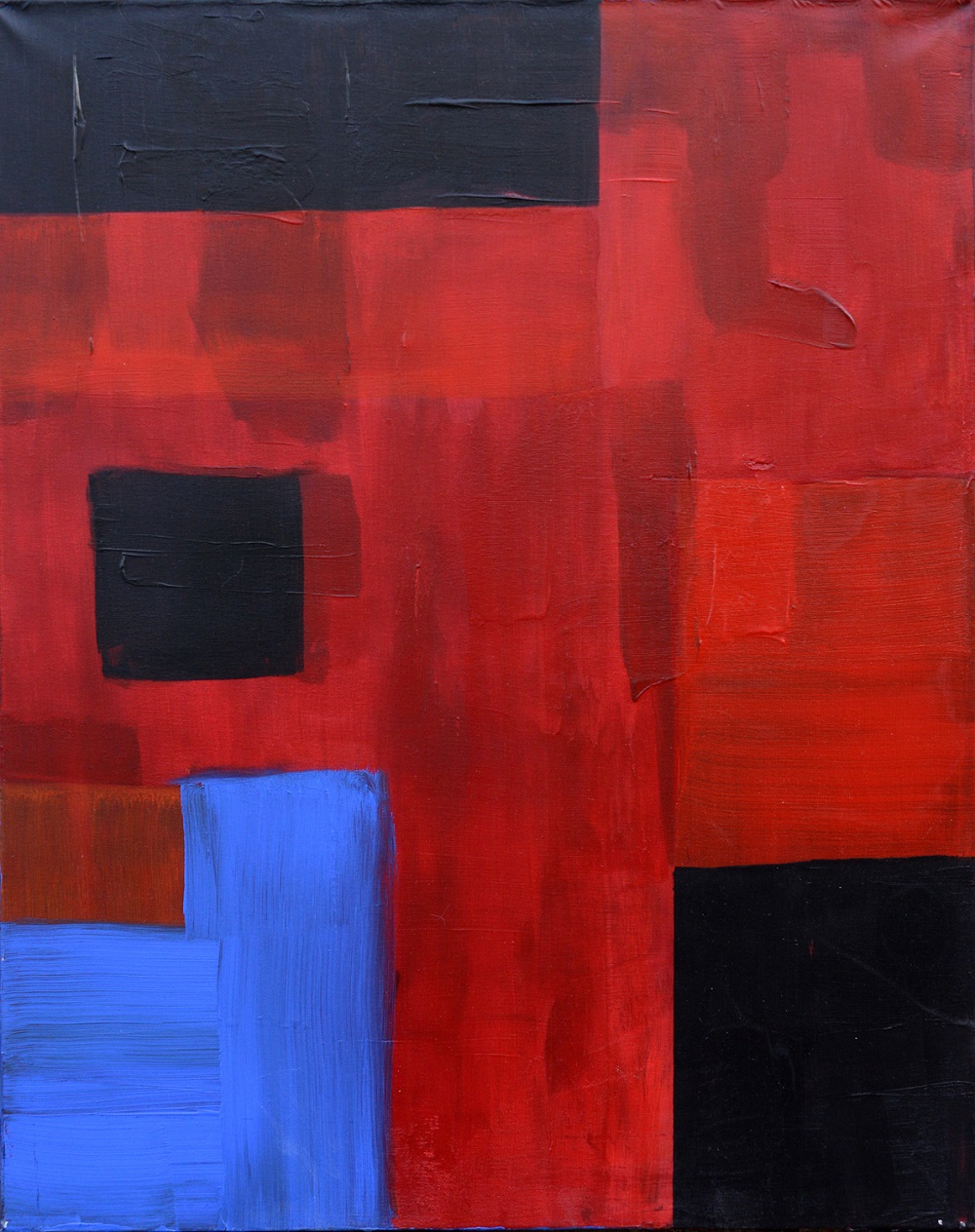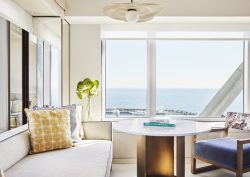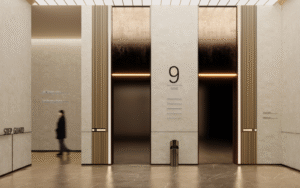We caught up with artist Frances Bildner, whose vital and colourful abstract works can be found in collections throughout Europe and America, and asked her what inspires her and her thoughts on the role art can play in hotel design…

Frances Bildner, the founder of Frances Bildner Expressive Arts, creates fine art for both public and private spaces, believing that art has transformative powers which not only enhances an environment but can also add a strong identity to any business. Her bespoke and vibrant artwork can create company ambience while drawing people into a space in an uplifting and positive manner.
Hotel Designs: A lot of your work is inspired by places. What places have inspired you recently?
Frances Bildner: Cuba has inspired me recently with its dusty beautiful buildings. It is a country full of colour. Truly inspirational. The Cuban people seem to place a great deal of emphasis on art and colour. Their Buildings are beautiful, old and slightly frayed which all adds to the atmosphere. The cars are old classics in pastel colours. Everywhere you look, from hotels to bars and architecture, it is immersed in colour and style. It is a place that really places emphasis on style and aesthetics. It is a real inspiration for any artist. Just to be a part of this kind of environment encourages creativity. In the words of author Rachel Weiss in her book To and from Utopia in New Cuban Art, “every Cuban is an artist and every home is an art gallery.”
HD: What makes your artwork so appealing for hotel designers?
FB: My paintings are bold, colourful and vital. They add a certain statement to the hotel walls and make people feel comfortable in the hotels. People don’t seem to want art that melts and disappears into walls anymore. Indifferent, wallpaper-like images that don’t say anything. My art does make a statement and compliments the lobbies and guestrooms in hotels. It adds warmth and life, and helps make the atmosphere congenial. It also helps unify the space to complete the atmosphere in the hotel. I believe that colourful vital art also promotes good business as hotel guests are affected by the environment and will tend to stay in a hotel with a warm colourful atmosphere more than in dull cold hotels where there is little emphasis on the interior.
HD: In your experience, what are the major pitfalls facing designers when specifying art?
FB: Sometimes designers are not open enough to artwork and are constrained by fashion and trends, especially when it comes to colour. They are also sometimes a little cautious, avoiding artwork that is bold and colourful. They don’t always like to take risks, and so avoid originality. They not only miss out on something unique and beautiful, but also seem to go back a few steps to safer images that are watered down and melt into the background.
HD: In a recent article, you mentioned art’s power over the January blues. Why is there such a emphasis on bold colours at the moment?
FB: Bold colours make one stop and look, and can banish the cold indifference brought on by January! January and February are months when people in cold climates tend to become more listless and at the same time we naturally try to get away to warmer climates where colour is abundant and the sun shines. By adding more colour in the shape of bold art to the hotel rooms and lobbies, design can help people forget, albeit it temporarily, those winter blues.

Image credit: Frances Bildner
HD: What’s your favourite period of art history?
FB: The German Expressionists with their emphasis on freedom and emotion with a move away from realism. This was in great contrast to movements that came before which focused on more accurate depictions of reality and nature. They used brilliant colour and painted according to inner feeling. They were reacting against the bourgeois culture of Germany at the time, and it was a very fertile and exciting time for the arts. I would have loved to have been part of this movement.
Also the Abstract Expressionists and their action painting, so spontaneous and free. Primarily based in New York City, their art placed great emphasis on the expressive and emotional content.
For me these two movements represent the most exciting period in art history as both marked a freeing of restrictions that were around for artists before modern art.
HD: We’ve noticed a rise in art residencies in hotels recently, do you feel this is a good or bad thing for the art industry?
FB: I think it’s a good thing, as more people are taking notice of what artists can contribute. It enables the artist to become a part of the bigger picture, and inclusion and integration of this sort is, I believe, a good thing for the art industry. Artists in residence are becoming a growing trend amongst the most innovative hotels, the Ace Hotel New York is a good example where they host writers, photographers and painters. In The UK we have art hotels in Bristol and the London Edition for example has pieces by Jenny Holzer and Tracy Emin.
HD: We recently wrote about digital art, and its wellness benefits. Will traditional art ever be replaced by digital experiences?
FB: I hope not! Why does digital art have wellness benefits? Certainly, I don’t understand why digital art would ever provide more wellness benefits than traditional art. In my opinion, digital art or NFT’s can never be a substitute for an original painting or a good print from that original. How can owning a piece of something digitally replace owning an original which one can see and touch every day? I recently read an article about a man who had NFT’s and finally bought an original. He was so excited about owning an original painting! I hope traditional art is never replaced by digital art. We have been through many periods of ‘painting being dead’, but it has always bounced back. I believe it is here to stay – from the cave paintings in Lascaux to our modern art, painting is alive and well.
Frances Bildner Expressive Arts is one of our Recommended Suppliers and regularly features in our Supplier News section of the website. If you are interested in becoming one of our Recommended Suppliers, please email Katy Phillips.
Main image credit: Frances Bildner Expressive Arts
























